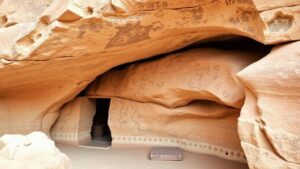Using Soil Temperature Variations to Identify Recently Exposed Relics
Using Soil Temperature Variations to Identify Recently Exposed Relics
Understanding soil temperature variations has become an essential method in archaeology for identifying recently exposed relics. This technique leverages the physical and chemical properties of soil, as well as the biological activities within it, to detect changes that may indicate the presence of artifacts or other archaeological features. This article explores the principles behind this approach, relevant methodologies, and real-world applications.
The Basics of Soil Temperature
Soil temperature is influenced by various factors including air temperature, moisture content, and soil composition. But, it also reacts to external stimuli, such as the introduction of foreign materials into the soil. When relics are uncovered, they disrupt the existing balance of these factors, leading to notable changes in the soil temperature profile.
Researchers utilize temperature sensors and data loggers to monitor soil temperatures over time. Recording these variations is crucial, as they can reveal patterns that suggest the recent exposure of relics.
Mechanisms of Temperature Variation
When a relic is exposed, the surrounding soil temperature can change for several reasons:
- Thermal Conductivity: Different materials have varying thermal conductivity. For example, metals tend to conduct heat away from or toward them, depending on the environmental conditions. This creates a localized temperature anomaly.
- Moisture Retention: Artifacts, particularly those made of porous materials, can retain moisture. The evaporation of this moisture can lead to cooler temperature readings in their vicinity compared to untouched soil.
- Microbial Activity: The presence of organic materials around artifacts can increase microbial activity, altering local temperatures due to biological processes such as respiration and decomposition.
Applications in Archaeology
This methodology has significant applications in archaeological surveys and excavations. For example, the method was employed at the ancient site of Pompeii, where researchers detected disturbances in soil temperature that hinted at previously undiscovered structures beneath the volcanic ash.
In another case, archaeologists monitoring a historical battlefield employed soil temperature sensors to locate unexhumed artifacts and mass graves. The temperature fluctuations provided a non-invasive means to identify sites of interest without extensive digging.
Data Collection and Analysis
The successful implementation of this technique relies heavily on accurate data collection and analysis. Key components include:
- Temperature Sensors: Use high-resolution, durable sensors that can withstand field conditions.
- Data Loggers: Employ loggers capable of storing extensive datasets for post-processing analysis.
- Geospatial Mapping: Integrate temperature data with geographic information systems (GIS) to visualize patterns and anomalies.
Advanced statistical methods are often applied to analyze the data collected, allowing researchers to distinguish between naturally occurring temperature variations and those indicative of archaeological features.
Challenges and Limitations
While using soil temperature variations is a promising technique, several challenges exist. Factors such as extreme weather conditions, soil type variability, and interference from human activities can skew results. Also, temperature variations alone do not provide definitive proof of exposed relics; they merely suggest areas for further investigation.
Addressing these challenges requires a multidisciplinary approach, combining soil science, archaeology, and data analytics to refine the methodology and improve accuracy.
Real-World Useation: A Case Study
A pertinent case study is the excavation of ancient Roman structures in Catalonia, Spain. In this instance, researchers employed soil temperature variation analysis to locate buried walls and pathways. By installing a network of temperature sensors at strategic locations over several months, they recorded significant temperature anomalies correlating with excavation points. This directed their efforts efficiently, enabling them to uncover historical remnants with minimal disruption to the surrounding area.
Conclusion and Actionable Takeaways
Utilizing soil temperature variations represents a valuable asset in the archaeologists toolkit, combining technology with traditional excavation methods. To effectively implement this strategy:
- Invest in high-quality temperature monitoring equipment.
- Ensure comprehensive training for field personnel in data collection and analysis.
- Adopt a holistic approach that combines temperature data with archaeological context.
As archaeological methodologies continue to evolve, the integration of soil temperature variations may revolutionize the way archaeologists locate and understand our shared history.



